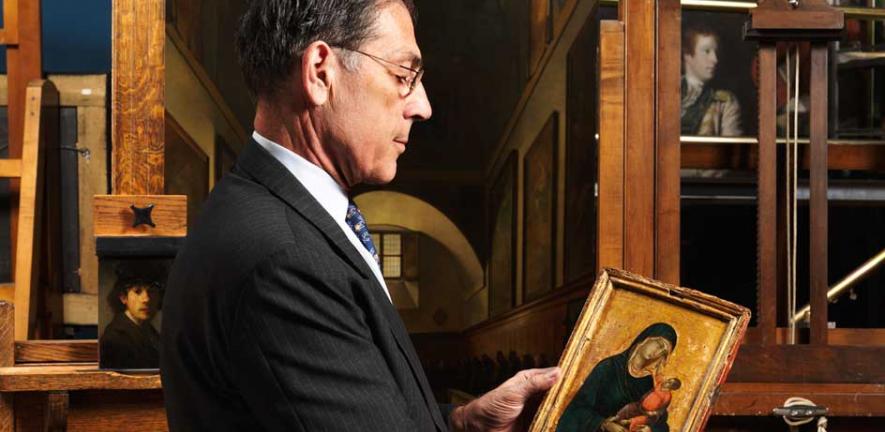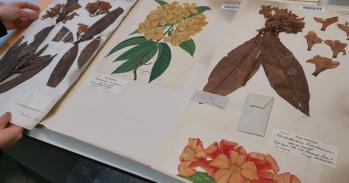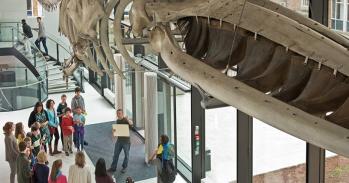
Eminent art historian and former director of New York’s Metropolitan Museum, Philippe de Montebello will this week give two lectures that explore the multiple lives of works of art. Both lectures are free and open to the public.
Eminent art historian and former director of New York’s Metropolitan Museum, Philippe de Montebello will this week give two lectures that explore the multiple lives of works of art. Both lectures are free and open to the public.
Mr de Montebello will unlock the extraordinary backstories of some of the world’s most famous works of art.
Works of art elicit powerful, and remarkably contrasting, responses. On one hand, major shows at some of the world’s top museums attract huge numbers of visitors keen to see artworks that have become iconic in our imagination. When, for example, items from China’s Museum of the Terracotta Army were shipped across the world to the British Museum, more than 850,000 people came to see them. On the other hand, works of art known to be rare and precious, and revered by the local communities they belong to, continue to be singled out for destruction. Earlier this year Islamist militia in northern Mali smashed some of the greatest treasures of Timbuktu.
It’s all about context and symbolism: the 120 Chinese figures were exhibited to art-loving audiences in a hushed atmosphere of dim lights in a museum devoted to safeguarding treasures from around the world; the tombs at Timbuktu’s famous 14th-century mosque were smashed by the rebels as idolatrous and abhorrent to their fundamentalist beliefs.
The movement of historic artefacts across time and space, the huge shifts in the ways in which they are perceived, and the wilful destruction of iconic treasures within a context of clashing ideologies are some of the potent themes that will be explored in two public lectures to be given this week by the eminent art historian Philippe de Montebello, as part of a series titled The Multiple Lives of the Work of Art.
The series began last week with a lecture called The Many Faces of Context, which introduced the audiences to the notion of re-contextualisation as a form of appropriation. In his presentation Mr de Montebello drew the audience’s attention to how works of art are aestheticised and desacralised in museums, which he called "our new temples of art". He discussed how our experience and identification of art in a museum is conditioned by what is included and the way it is installed.
Today (20 November) Mr de Montebello will talk about Destruction, Alteration and Renewal and on Wednesday (21 November) he will lecture on Change as Constant. Mr de Montebello, who is currently in Cambridge as Humanitas Visiting Professor in the History of Art at CRASSH, is Director Emeritus at the Metropolitan Museum of Art in New York and Fiske Kimball Professor at the Institute of Fine Arts, New York University. Under his leadership the Metropolitan Museum almost doubled in size.
Constructing his presentation around a number of case studies, Mr de Montebello will unlock the extraordinary backstories of some of the world’s most famous works of art. His examples will range from the cutting of Corregio’s painting of Leda and the Swan into four pieces, and the repainting of Leda’s head some five times, acts which are now invisible to the naked eye, to the extraordinary journey of the Horses of St Mark, sculptures which have not just travelled across Europe but have had their impact shaped by the settings in which they have featured – symbols of triumphalism in one environment become symbols of strength and beauty in another.
The premise of the lectures is that no work appears to us today as it was originally conceived. Works of art undergo many changes in the course of their lives, ranging from deliberate alterations and natural degradations. Moreover, the passing of time inevitably distances us from the context in which they were first viewed: change, as the title of the second lecture asserts, is constant and unstoppable. Charting that change entails the meticulous scholarship of the art historian and Mr de Montebello promises that his talk will reveal many surprises in the lives of some of the works he will discuss.
The list of the ways in which works of art are deliberately transformed and adapted, re-configured and hybridised, mirrors mankind’s ingenuity as precious materials are scavenged, images and iconography are updated, and the perceived ravages of time are repaired, restored or conserved. In each case, the work of art enters a new phase, posing important questions for those who establish museum policy on conservation. The chemistry of the materials used to make paintings is another factor: some colours are fugitive and varnish has been shown to change colours as it ages. Works of art are transformed not just by the actions of man but also by natural disasters. The floods that swept through Florence in 1966 surged through many of its historic buildings including the Uffizi Gallery, home to some of Italy’s most precious works of art. Again in Italy, recent earthquakes have seen many churches reduced to rubble or badly damaged. By this process, buildings are reconstructed or become ruins.
With the exception of four years as director of the Museum of Fine Arts, Houston, Mr de Montebello has spent his entire career at the Metropolitan Museum. He started as a curator in the Museum’s Department of European Paintings, and by the time of his retirement in 2008 had become its longest-serving director. During his tenure the Museum underwent substantial development with the acquisition of significant collections and individual masterpieces, the mounting of acclaimed exhibitions and the refurbishment of existing galleries and creation of new ones. He continues to be extremely active in the art world in an advisory basis and makes regular television appearances.
The lectures Destruction, Alteration and Renewal (20 November) and Change as Constant (21 November) will take place in the Mill Lane Lecture Rooms, Cambridge University, at 5pm. The talks are open to the public and free of charge.
This work is licensed under a Creative Commons Licence. If you use this content on your site please link back to this page.





